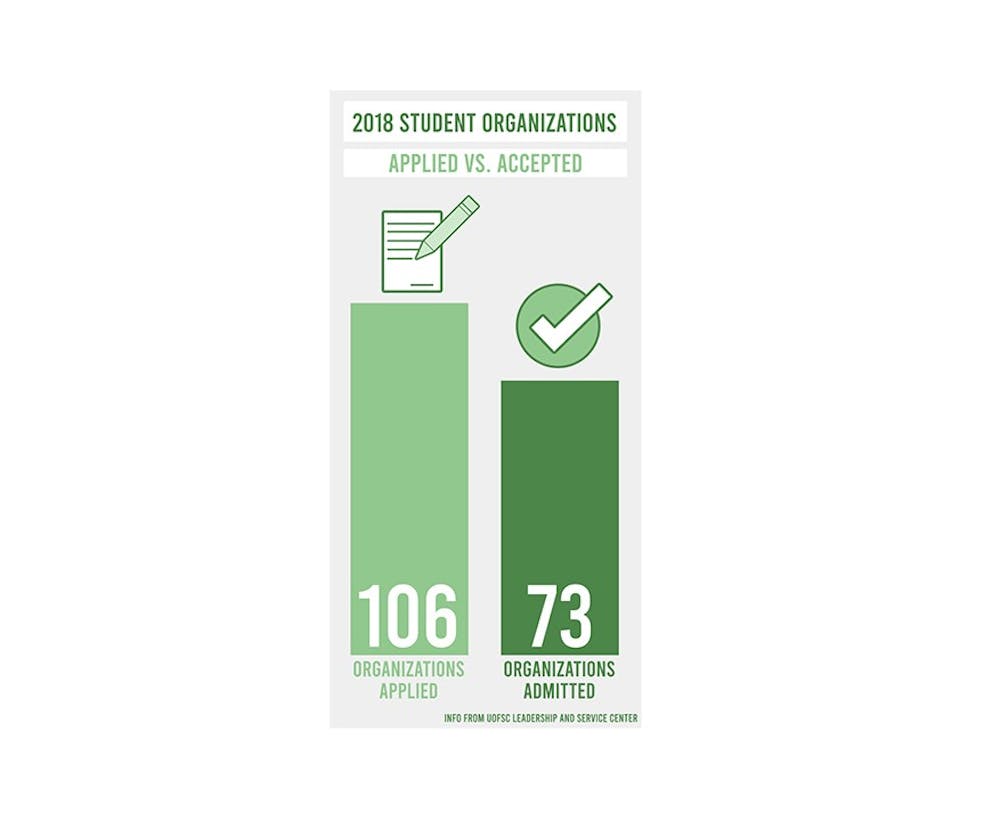Becoming a student organization on campus requires organizations to have 10 members prior to acceptance, a constitution, a structure and more leading some students to struggle to get their organizations approved.
The most common reason for rejection of new student organizations is the constitution and the specific clauses required to qualify, according to the Leadership and Service Center. These standard requirements include the non-discrimination policy, the hazing policy or officer requirements.
"These are really foundational to y'all being successful and for you all to be successful on our campus," said Ryan Patterson, assistant director of the Leadership and Service Center.
Third-year visual communications student Qhira Bonds said one of the biggest problems for her organization is thoroughly reading through the requirements and making sure they pay attention to the specific requirements.
"So one of the things is the constitution, which I didn't know that you have to go through and there's a certain wording that you have to have based on USC," Bonds said.
Bonds is the vice president of Zeta Phi Eta, a potential professional communications Greek organization that is trying to become an official student organization. Bonds said she and some friends began thinking about the organization during her second semester of her first year.
Bonds said they initially were excited and somewhat rushed the process and ended up getting denied because of the wording. However, she said she remains passionate about her organization, and she and her friends will continue efforts to meet the requirements.
"'This is what they said to do, and we're just gonna do it,'" Bonds said.
Another issue some organizations face is keeping afloat once they've been established as a club and club leadership passing the torch after graduation or leaving the club.
"So you're super passionate about this idea, but how are you going to put that passion onto your members so that they stay engaged with the organization and take over once you're gone?" said Stephanie Suarez, a leadership coach at the Leadership and Service Center.
Both Suarez and Patterson said there is a coaching program for organizations before approval, after approval and during the life of the organization to help aid in the success of the organization.
"It's also kind of difficult to recruit 10 people for a group that doesn't exist yet," Mac Chapman said. However, this year the Leadership and Services Center reduced the recruitment number to seven members.
Chapman, a third-year risk management and insurance student, is the president of Give a Dog a Bone, a student organization focused on volunteering for shelters like Pawmetto Lifeline and raising money for shelters, which he found a passion for after working for dog walking company Wag!
"I was thinking, you know, I really enjoy working with animals, I also like volunteering," Chapman said. "What can we do there?"
He also said he had trouble with the bylaws because of the vagueness and an issue with the faculty adviser, which Suarez also said are among the top issues new student organizations face.
Chapman said he recommends new organizations have a dedicated set of members, have their policies set and goals in mind for the semester.
Suarez's top piece of advice for new student organizations is to make sure an organization like theirs doesn't already exist. If an organization similar to theirs does, then they should research it and potentially join it, instead of creating a new one. Next, Suarez said a keen reading over the specific wording required for student organizations is important because applications will be denied if the wording of the organization's constitution doesn't match requirements.
Finally, Suarez said to understand what structure you want for your organization, for example, does an organization need a social media page, does it need a president, vice president, treasurer and so on.
Patterson said once an organization becomes an official student organization, the next step is to reach out to the Leadership and Service Center for guidance and resources like technology and websites like Garnet Gate that student organizations are granted access to. Patterson also said attending the student organization fair and the collaboration breakfast where student organizations can come together and share ideas.
"Student organizations are fundamental to the student experience here on campus and we recognize that," Patterson said. "Which is why we take the role that we do in terms of supporting student organizations and helping them be successful so seriously."
Correction: Previously reported in this article was a quotation about a student's difficulty to recruiting 10 members prior to applying to become a student organization and the Leadership and Services Center reduced that number to seven, this year.

